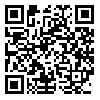BibTeX | RIS | EndNote | Medlars | ProCite | Reference Manager | RefWorks
Send citation to:
URL: http://jdm.tums.ac.ir/article-1-342-en.html
Statement of Problem: The pulp may be exposed during remove of caries or by traumatic and iatrogenic injuries. The material used to DPC, must be biocompatible, scalable and prevent bacterial leakage.Furthermore, it is better to stimulate dentinogenesis. Calcium hydroxide is most usual material for DPC. But it cannot provide a suitablcbiologic seal. Mineral irioxide aggregate (MTA) is also a suitable material for DPC.
Purpose: The aim of this study was to compare the clinical success of DPC done with MTA or calcium hydroxide cement.
Materials and Methods: In this study eighteen posterior teeth without previous spontaneous pain that involved mechanicaly exposure was randomly selected and capped with MTA or calcium hydroxide. These teeth were evaluated by clinical vitality test and radiograph after 3 and 12 months, and patients were questioned about irritative or spontancus pain in this period. Statistical analysis was carried out by Usher exact
test (a-0.05).
Results: This study showed that in calcium hydroxid groud three had irreversible pulpitis and two teeth had symptom and signs of reversible pulpitis. While, In MTA group all cases were normaL and no clinical sign was evident.
Conclusion: MTA exhibited better results than calcium hydroxide cement for the capping of the pulp in human
| Rights and Permissions | |
 |
This work is licensed under a Creative Commons Attribution-NonCommercial 4.0 International License. |




